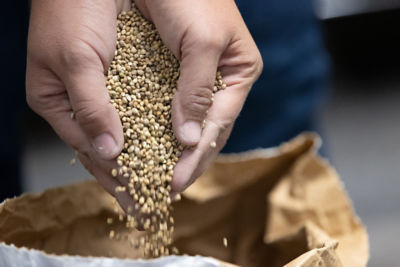Causal Agent
Corynespora cassiicola
Distribution
Europe, India, Nigeria, the Caribbean and USA
Symptoms
All above-ground parts of the plant may become infected. Symptoms begin on leaves as tiny lesions, which rapidly enlarge and develop into light brown lesions with distinct yellow halos. Often, the lesions grow together, causing the infected tissue to collapse. Symptoms on stems also begin as small lesions, which rapidly enlarge and elongate. These lesions may eventually become large enough to girdle the stem, resulting in the collapse of the tissues above that point. When disease is severe, numerous leaf and stem lesions form on plants, causing extensive collapse of tissues and, eventually, the death of the plant. Infection of immature fruit begins as minute, dark brown sunken spots, which enlarge as the disease progresses. Large brown circular lesions with cracked centers develop on mature fruit. Fungal sporulation commonly occurs in these lesions.
 Coalescing lesions surrounded by chlorosis.
Coalescing lesions surrounded by chlorosis.
 Large, brown-black, circular, sporulating lesions. (Courtesy of Yuan-Min Shen, Taichung District Agricultural Research and Extension Station, Bugwood.org)
Large, brown-black, circular, sporulating lesions. (Courtesy of Yuan-Min Shen, Taichung District Agricultural Research and Extension Station, Bugwood.org)
Conditions for Development
This fungus has a broad host range on which it can survive. Infection occurs readily during periods of mild temperatures between 16-32°C (61-90°F) and high moisture. Fungal spores. which often form abundantly on the surface of infected tissues, are spread by air movement and rainfall.
Control
A good fungicide spray program initiated prior to the onset of symptoms can help reduce losses from this disease.



